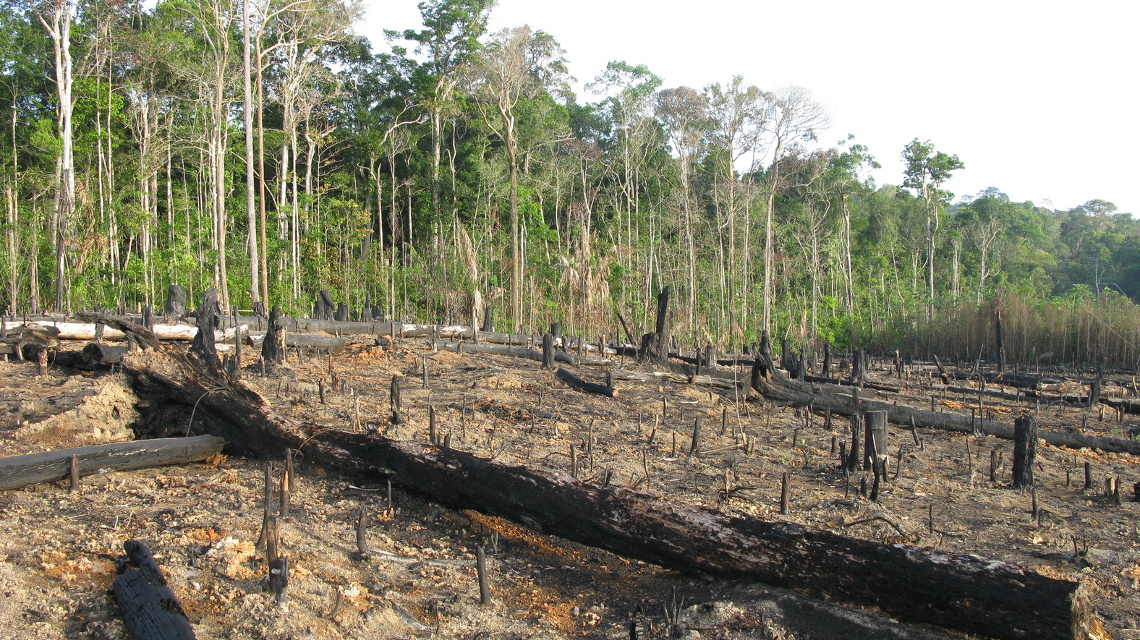Biodiversity under attack
Biodiversity researchers sound a warning: Global biodiversity is being destroyed by rapid economic and population growth, which is undermining progress.

New technologies such as field robots are already making agriculture more efficient and sustainable. New habitats for insects and other animals are being created with flower strips or mixed cultivation of crops. This contributes to the protection of biological diversity. But can all these measures halt the global loss of biodiversity? Apparently not. This is the result of a study presented by researchers from the German Centre for Integrative Biodiversity Research (iDiv) and the Martin Luther University Halle-Wittenberg (MLU), published in the journal "Nature Ecology & Evolution".
Environmental degradation increases despite effective land use
Although land use has become more effective over the years, overall environmental degradation has also increased. "The world's population and economy are growing so fast that they are compensating for the progress made," explains Alexandra Marques from the iDiv research centre and the University of Halle. The team led by Alexandra Marques and Henrique Pereira has been investigating how land use has affected biodiversity and ecosystem services in 2000 and 2011, and how this has changed over the years. Data on bird populations, land use and CO2 sequestration were linked to economic models.
Growing land use through growing consumption
The main focus was on the role of population and economic growth in this context. The result: the growth of population and economy has led to increased land use all over the world. The reason for this is the associated increase in consumption. The production of the corresponding goods requires more and more land. As a result, nature has to give way to fields and plantations, which in turn is detrimental to biological diversity and endangers ecosystems.
Tropics hardest hit by species loss
According to the researchers, almost every purchase of a food product would indirectly influence nature from a distance. The developed countries are outsourcing 90% of the destruction caused by the consumption of agricultural products to other parts of the world. According to the study, the number of bird species threatened with extinction by land use increased by up to 7% between 2000 and 2011. The loss of biodiversity takes place almost exclusively in the tropics, as the researchers state.
Ecosystems bind less CO2
During the same period, the loss of land reduced the global potential of ecosystems to absorb CO2 from the air by 6%. The loss of land reduced the global potential of ecosystems to absorb CO2 from the air by 6%. A quarter of the decline is due to changes in the use of land for agriculture and forestry in Europe and North America. The researchers believe that the industrialized countries must take responsibility. They need to pay greater attention to the long-distance responsibility for the destruction of biodiversity and to the effects of their own climate policy, they say. "We need an environmental policy that considers climate change and the change in biological diversity together," recommends Pereira.
Concepts against population growth
Consumption increased not only in the industrialized countries, but also in other countries of the world during the period under study, thus correcting the image of the "culprits" of biodiversity loss: "It is not either the North or the South - it is both. The emerging countries are currently overtaking the industrialized countries as the main cause of biodiversity loss," says Pereira. The researchers come to the conclusion that in order to protect biological diversity, nature conservation policy needs concepts against population growth and for sustainable consumption.


